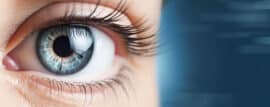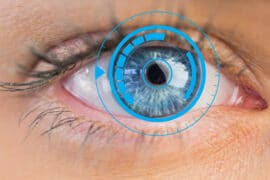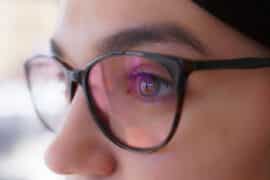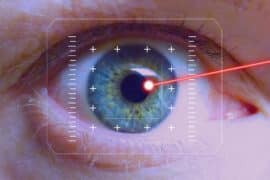Corneal tissue addition keratoplasty (CTAK) is a novel surgical procedure that plays a crucial role in the treatment of keratoconus. This innovative technique involves adding sterilized donor corneal tissue, cut into a customized inlay to improve corneal topography and visual acuity. The cornea is the transparent, outermost layer of the eye that serves as the […]
Read More
Posted by Cornea and Laser Eye Institute on September 3, 2024
The Most Advanced Keratoconus Treatment: CTAK Keratoconus is a progressive eye condition that causes the cornea, the clear front part of the eye, to thin and bulge into a cone-like shape. This irregular shape can lead to significant vision problems, including blurred and distorted vision, light sensitivity, and difficulty driving at night. Traditional keratoconus treatments […]
Read More
Posted by Cornea and Laser Eye Institute on August 27, 2024
Keratoplasty Procedures for Keratoconus Patients With decades of experience, the team of experts at CLEI understands the many challenges keratoconus patients face as they strive to find a treatment that will result in clear vision. This is especially true for patients with advanced keratoconus. For years, the go-to treatment option for advanced keratoconus was keratoplasty, […]
Read More
Posted by Cornea and Laser Eye Institute on August 16, 2024
What is CTAK? Corneal Tissue Addition Keratoplasty (CTAK) is a surgical procedure that uses custom shaped, preserved corneal tissue to treat the structural and visual abnormalities caused by keratoconus. As you may know, keratoconus is a progressive condition that causes the cornea to thin, weaken, and bulge outward, losing its symmetrical shape. As the dome […]
Read More
Posted by Cornea and Laser Eye Institute on August 14, 2024
CLEI’s dedication to keratoconus patients is unparalleled. With decades of experience spent treating keratoconus patients, we understand that this progressive condition presents some unique challenges for diagnosis and treatment. Without early diagnosis and effective treatment, a patient’s quality of life can be severely impacted. That’s why we founded the first dedicated subspecialty center for keratoconus […]
Read More
Posted by Cornea and Laser Eye Institute on August 13, 2024
What is Keratoconus? Keratoconus is a progressive eye disease. With keratoconus, the cornea thins and begins to bulge. Over time, the natural shape of the cornea becomes more and more distorted, causing vision-related symptoms such as halos and glare, flares, smears, streaking, multiple images, overlapping images, and starbursts. How Does Keratoconus Impact Daily Life? As […]
Read More
Posted by Cornea and Laser Eye Institute on July 15, 2024
Keratoconus is a surprisingly common disease that results in an irregular cornea shape. While a normal cornea has an evenly rounded dome shape, a cornea affected by keratoconus becomes steeper and cone-like in shape. The conical shape distorts light and creates multiple focal points on the retina. Distorted light leads to distorted vision, with most […]
Read More
Posted by Cornea and Laser Eye Institute on July 12, 2024
The CLEI Center for Keratoconus is world-renowned for innovating and improving upon corneal surgical techniques. One such technique is corneal tissue addition keratoplasty (CTAK). Unlike treatments that simply focus on addressing refractive errors, CTAK was envisioned as a procedure that could address the underlying structural irregularities associated with keratoconus. In 2016, clinical trials for this […]
Read More
Posted by Cornea and Laser Eye Institute on June 26, 2024
What is Corneal Crosslinking? Collagen is a crucial protein found throughout our bodies, providing strength and support to various tissues, including corneal tissue. However, for patients with keratoconus, the collagen fibers in the cornea weaken and become susceptible to deformation. The compromised corneal tissue eventually loses its symmetrical dome shape, bulging outwards and resulting in […]
Read More
Posted by Cornea and Laser Eye Institute on June 25, 2024
Understanding Keratoconus and the Need for Surgical Intervention Keratoconus is a progressive eye condition where the cornea, the clear front part of the eye, thins and bulges into a cone-like shape. This irregular shape can cause significant vision problems, including blurred and distorted vision, sensitivity to light and glare, and difficulty driving at night. While […]
Read More
Posted by Cornea and Laser Eye Institute on June 19, 2024













